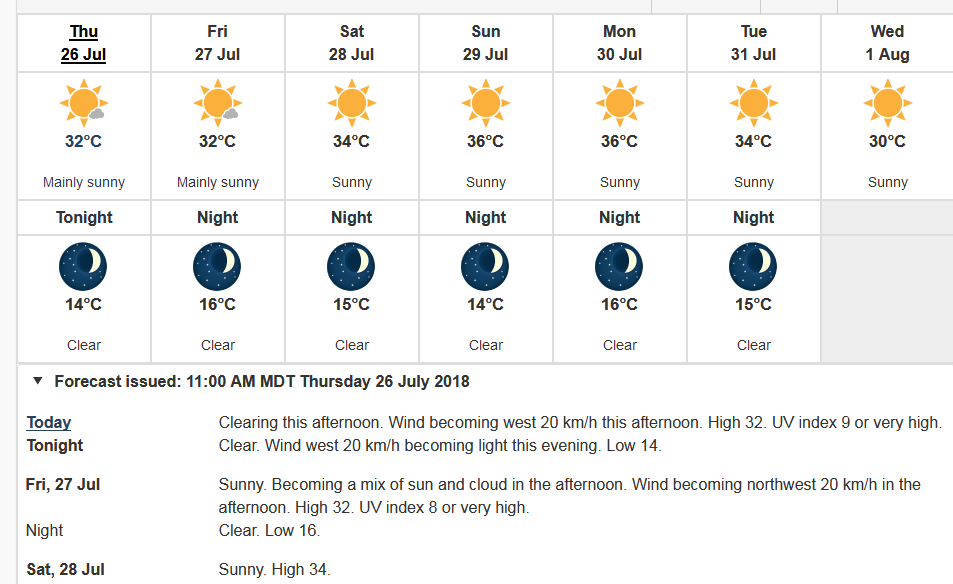High temperatures expected across Interior Health
Temperatures across B.C. are expected to soar this weekend. Environment Canada has issued a heat warning for much of the province, including parts of the South and North Thompson and Fraser Canyon in IH.
Too much heat can be harmful to your health and can lead to weakness, disorientation and exhaustion. In severe cases, it can also lead to heat stroke, also known as sunstroke. Heat stroke is a life-threatening medical emergency. Here are some signs to watch for and suggested tips to keep you safe and healthy.
Who is most at risk?
· Infants and children up to four years of age who rely on adults to make sure their environments are comfortable and provide them with enough fluids.
· People 65 years of age or older who may not compensate for heat stress efficiently and are less
likely to sense and respond to high temperatures.
· Healthy individuals who do a lot of physical activity or work in a hot environment.
· Those with heart problems and breathing difficulties.
Symptoms to watch for?
The symptoms of heat-related illness can range from mild to severe. They include:
· pale, cool, moist skin;
· heavy sweating;
· muscle cramps;
· rash;
· swelling, especially hands and feet;
· fatigue and weakness;
· dizziness and/or fainting;
· headache;
· nausea and/or vomiting;
· fever, particularly a core body temperature of 40° C (104° F) or more;
· confusion and decreased mental alertness;
· hallucinations;
· red, hot, dry skin (in the late stages of heat stroke);
· seizures; and
· unconsciousness/coma
What should a person do if they are experiencing symptoms?
When recognized early, most mild heat-related illnesses can be treated at home. Home treatment for
mild heat exhaustion may include:
· moving to a cooler environment;
· drinking plenty of cool, non-alcoholic fluids;
· resting;
· taking a cool shower or bath; and
· wearing lightweight clothing
If your symptoms last longer than one hour, change, worsen or cause you concern, contact a health-care
provider.
What steps can people take to avoid heat related illness?
· Never leave children or pets alone in a parked car. Temperatures can rise to 52° C (125° F) within 20minutes inside a vehicle when the outside temperature is 34° C (93° F). Leaving the car windows slightly open will not keep the inside of the vehicle at a safe temperature. Drink plenty of fluids. Drink extra water even before you feel thirsty.
· Keep cool – stay indoors in air-conditioned buildings or take a cool bath or shower. At
temperatures above 30° C (86°F), fans alone may not be able to prevent heat-related illness.
· Remember, sunscreen will protect against the sun’s ultraviolet (UV) rays but not from the heat.
· Plan your outdoor activity before 11 a.m. or after 4 p.m., when the sun’s Ultra Violet Radiation
(UVR) is the weakest.
· Avoid tiring work or exercise in hot, humid environments. If you must work or exercise, drink two to four glasses of non-alcoholic fluids each hour. Rest breaks are important and should be taken in the shade.
· Avoid sunburn – use sunscreen with SPF 30 or higher.
· Wear lightweight, light-coloured, loose-fitting clothing and a wide brimmed hat, or use an
umbrella for shade.
· Regularly check older adults, children and others for signs of heat-related illness and make sure
they are keeping cool and drinking plenty of fluids. Check on those who are unable to leave their
homes, and people with emotional or mental health concerns whose judgment may be impaired.
· For more information on heat-related illness, visit the HealthLinkBC websiteor dial 811.
























Comments